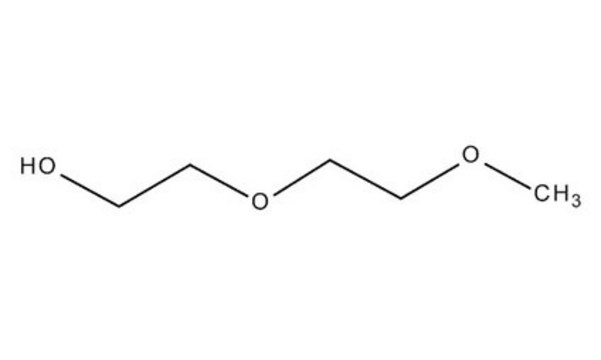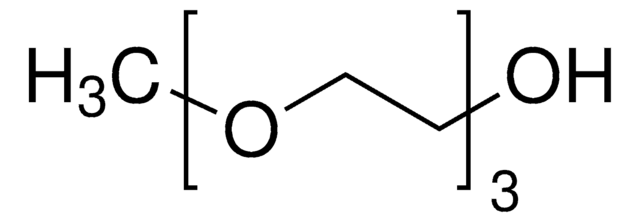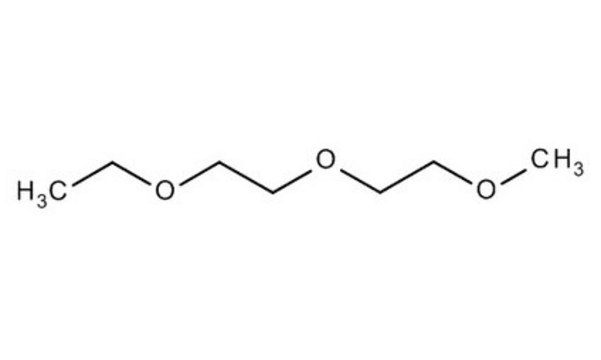579548
Diethylene glycol methyl ether
ReagentPlus®, ≥99.0%
Synonym(s):
2-(2-Methoxyethoxy)ethanol, Methyldiglycol
About This Item
Recommended Products
vapor density
4.14 (vs air)
Quality Level
vapor pressure
0.2 mmHg ( 20 °C)
product line
ReagentPlus®
Assay
≥99.0%
form
liquid
autoignition temp.
221 °C
expl. lim.
1.38-22.7 %
dilution
(for general lab use)
impurities
≤0.1% (water)
refractive index
n20/D 1.426 (lit.)
bp
194 °C (lit.)
mp
−70 °C (lit.)
density
1.023 g/mL at 25 °C (lit.)
SMILES string
COCCOCCO
InChI
1S/C5H12O3/c1-7-4-5-8-3-2-6/h6H,2-5H2,1H3
InChI key
SBASXUCJHJRPEV-UHFFFAOYSA-N
Looking for similar products? Visit Product Comparison Guide
General description
Application
- Composition-explicit distillation curves of diesel fuel with glycol ether and glycol ester oxygenates: fuel analysis metrology to enable decreased particulate emissions.: Investigates the incorporation of diethylene glycol methyl ether into diesel fuels to reduce particulate emissions. This research is vital for environmental science, focusing on improving air quality and reducing the ecological impact of diesel engines (Smith BL et al., 2008).
Legal Information
Signal Word
Danger
Hazard Statements
Precautionary Statements
Hazard Classifications
Repr. 1B
Storage Class Code
6.1C - Combustible acute toxic Cat.3 / toxic compounds or compounds which causing chronic effects
WGK
WGK 1
Flash Point(F)
188.6 °F - closed cup
Flash Point(C)
87 °C - closed cup
Choose from one of the most recent versions:
Already Own This Product?
Find documentation for the products that you have recently purchased in the Document Library.
Our team of scientists has experience in all areas of research including Life Science, Material Science, Chemical Synthesis, Chromatography, Analytical and many others.
Contact Technical Service






